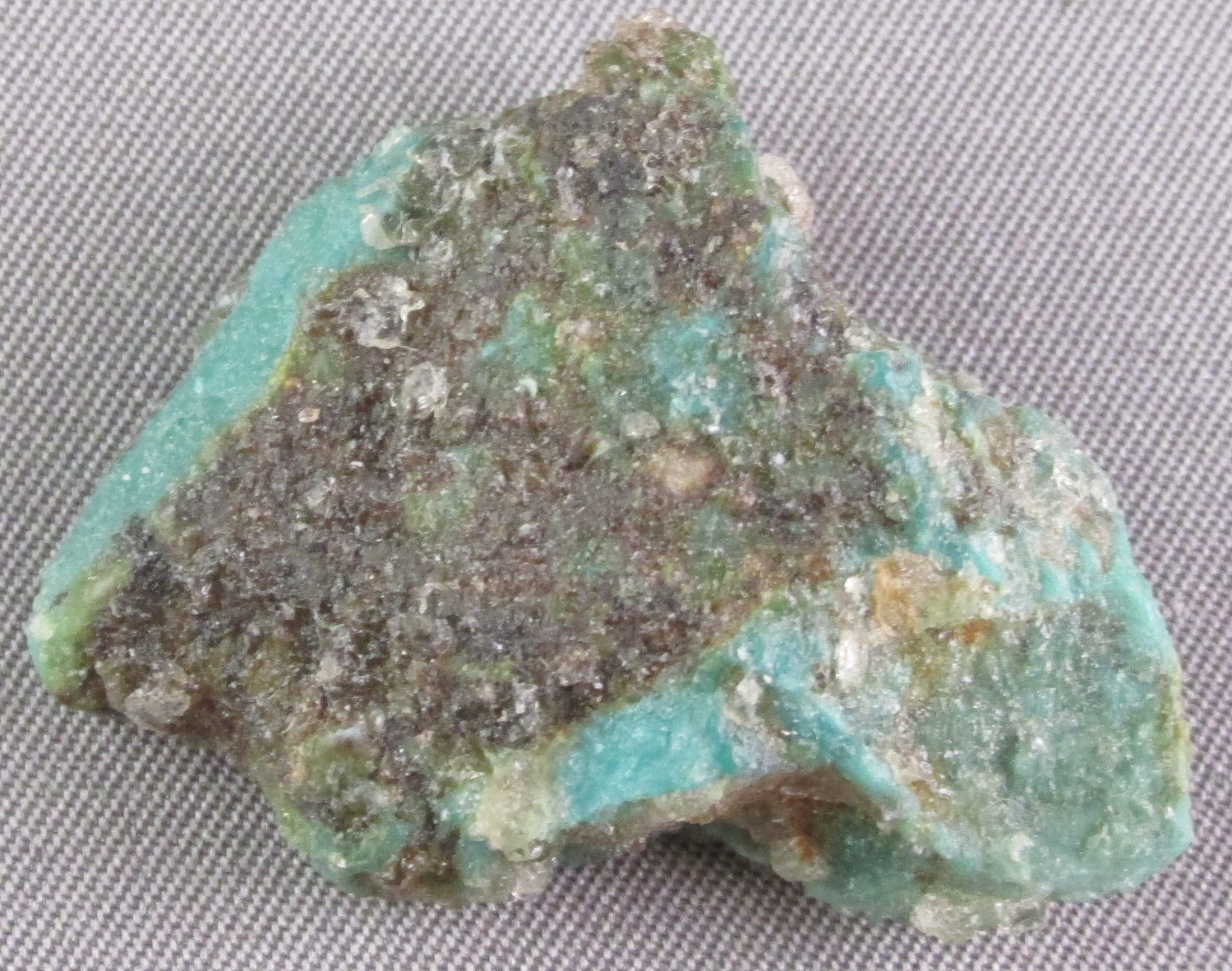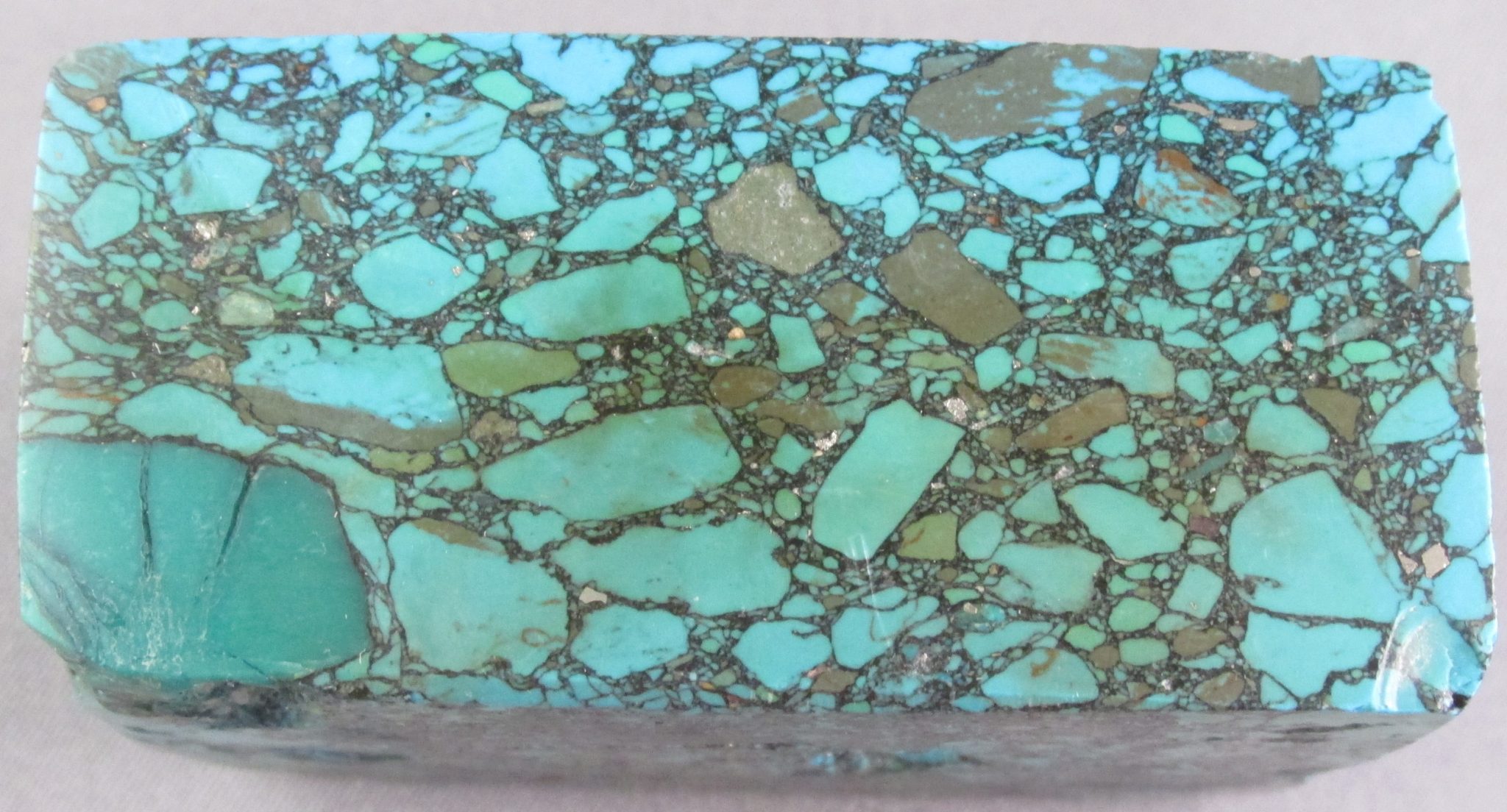The majority of all turquoise in jewelry, has stabilization. Most importantly, experts estimate that as much as 85 – 90% of all the turquoise on the market has STABILIZATION. Consequently, that means that only 10% to 15% of all turquoise is NATURAL, meaning it is hard enough to use in jewelry directly out of the ground.
Most turquoise, as it comes out of the ground, is “chalk”. Furthermore, similar to the chalk you remember in the classroom, this material is extremely porous and cannot take shape, without crumbling.

 KingmanTurquoise with stabilization
KingmanTurquoise with stabilization
Stabilized turquoise is when raw, natural turquoise has a plastic bonding agent. Most noteworthy, Stabilization can be present in both low grade (chalky) turquoise and unstable spider-webbed high-grade turquoise, as well as everything in-between.
This is when pulverize turquoise has epoxy and molds into predetermine shapes. Equally important, it is turquoise, only in the fact that it is powder turquoise and epoxy.

Block turquoise is a mixture of plastic resin, chemicals and dyes that come in loaf-size blocks. Block turquoise contains no actual turquoise of any sort. Iron pyrite is produces a “matrix” effect. Moreover, block is often present in inlay, heishi and beads. Sometimes sellers incorrectly label block turquoise as “reconstitute turquoise.” Consequently, there is no actual turquoise in this material!
Dyed turquoise is a process which uses a pigment to deepen a stone’s color
Waxed turquoise is turquoise that can soak or endure heat treating to improve the color
Turquoise can change color from blue to green, over time, reacting to human body oils, perfumes or heat. Tucson Turquoise offers vintage turquoise jewelry with these characteristics.
*It is amazing to note that all these stones are the same color when the jewelry piece is made. Most importantly, stabilization becomes wide spread around 1955. Pieces with multi-color turquoise stones typically start off with the same color matching stones. Consequently, stones can change color at different rates, according to their porosity.

Tucson Turquoise 1993 – 2024 © Schannep Ventures L.L.C. ALL RIGHTS RESERVED

